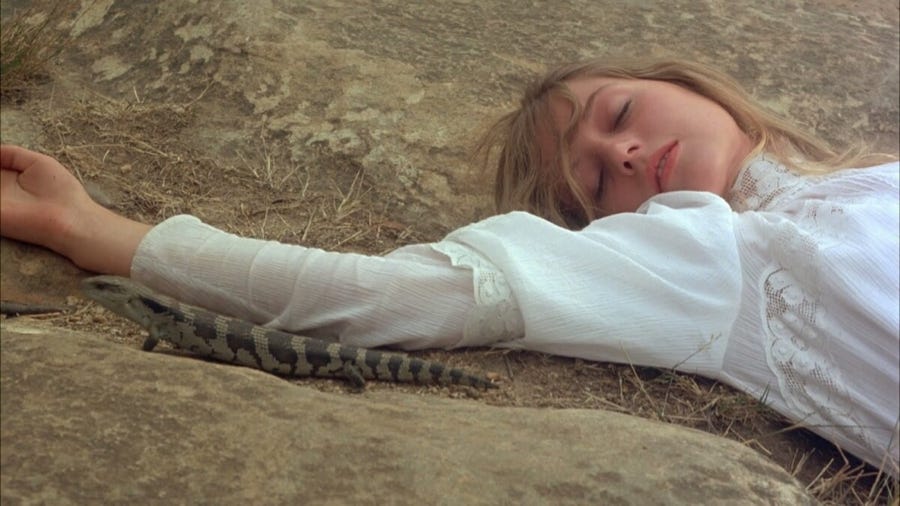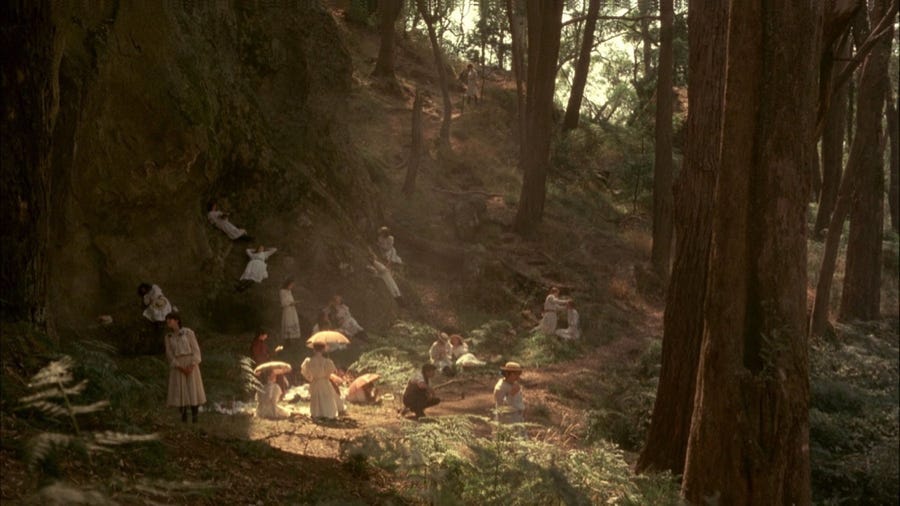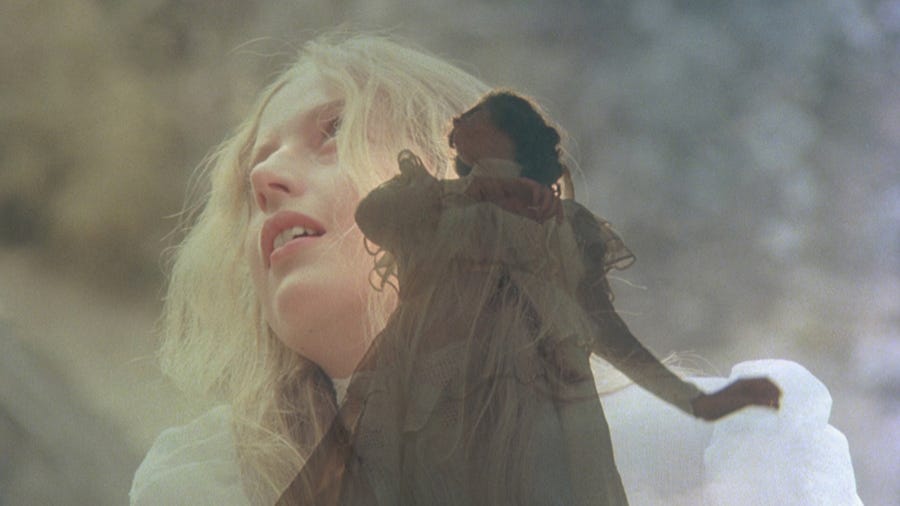Picnic at Hanging Rock (1975)
'What we see and what we seem are but a dream, a dream within a dream...'

Yet if hope has flown away
In a night, or in a day,
In a vision, or in none,
Is it therefore the less gone?
All that we see or seem
Is but a dream within a dream.
Edgar Allan Poe (1849)
Last night, I watched Picnic at Hanging Rock (1975). I have, of course, seen it before, many times over, and I have my own copy of the film on an oldish DVD, slightly scuffed and slightly scratched. Watching it again, it struck me how utterly aesthetic it is. Peter Weir’s films are not only visual and beautifully made, but often set to classical music. Remember Master and Commander (2003)? The frigate? The rolling seas? The magnificent ocean? That was set to Vaughan Williams’ Fantasia on a Theme by Thomas Tallis— also used to almost identical effect in Remando al Viento, aka Rowing the Wind (1988), with Herr Dr. Frankenstein’s cutter making its way through the icy Arctic waters. As with the 1960s Swedish soft-focus sensation that is Elvira Madigan (1967)), Picnic at Hanging Rock is an aesthete’s picture. Soft-focus cinematography and ooodles of lens flare and back-lighting. Russell Boyd, apparently, shot the film with a bridal veil draped across the lens to achieve a sort of muffled, ethereal look. It’s an intensely visual film. Choosing the stills for this post gave me endless, limitless possibilities— every still is framed, like a painting.
And Weir’s use of classical music is spot on (even if out of period)— there’s a marvellous scene at the beginning set to Bach’s first prelude from The Well-Tempered Clavier (Book One), which, for some strange reason, I find moving. With the horse-driven charabanc and the Victorian schoolgirls at the back, bolt upright, racing through an Australian small town, with pesky street urchins running behind. And later, Weir sets another bucolic, soft-focus scene against the adagio from Beethoven’s Piano Concerto No. 5 in E Flat Major, Op. 73. The rest of the film is set to Bruce Smeaton’s energetic and mysterious electronic soundtrack, especially effective when the girls ascend into the rock. Bruce Smeaton also composed the soundtrack for the television mini-series Seven Little Australians (1973)— based on the book by Ethel Turner, published in 1894— an orchestral tear-jerker very much in the manner of a Tchaikovsky symphony, in which Judy, the likeable, spirited heroine, gets squashed by a tree during another Australian picnic: “Don’t die, Judy! Don’t die!”— a traumatic sobfest if ever there was (it’s warped me for life)— actually, very similar in a way to the Seventies Edwardian poignancy of Lionel Jeffries’ The Railway Children (1970)— a genuinely moving film I may return to at Christmas.
Picnic at Hanging Rock (1975) is set in a smart Australian girl’s private boarding school in 1900. With a terrifying battleaxe of a headmistress (Rachel Roberts). It’s based on the novel by Joan Lindsay, first published in 1968. The publisher’s little joke (actually a brilliant marketing wheeze) was to pretend that the book was based on a true story:
On Saturday 14th February 1900 a party of schoolgirls from Appleyard College picnicked at Hanging Rock near Mt. Macedon in the state of Victoria. During the afternoon several members of the party disappeared without trace…
The book became a cult sensation, with writers and academics bending over backwards to explain what actually happened. Theories include alien abduction, ‘dimensions in time’, and a feminist interpretation, which has the girls running away from oppressive Victorian society, throwing away their corsets, with the aboriginal Hanging Rock standing as a symbol of freedom.
And there's something else I need to discuss. Picnic at Hanging Rock is splendidly 1970s: that decade of taste, style and creativity— ignore the lazy journalist's obsession with concorde collars, chocolate polyester and lava lamps. The rather druggy cinematography, the spotless white cotton à la Laura Ashley (lovely long hair), it's all a bit hippyish— in the best possible way, of course. If you've ever been to the Glastonbury Tor on Midsummer's Day, you'll know what I'm getting at. It's incredibly Arcadian, them meadows beneath the tor; flared, flopped-out, half-naked couples chewing grass (of both varieties), a bucolic haze. And that 'folk horror' thing, too, electricity pylons and dusty, stubbled fields. I use the term slightly tentatively, as, of course, at the time, this historical label was then unknown. But during the 1960s and 70s, strange things began to happen in the Shires. There's somethin' nasty in the woodshed: Alan Garner's The Owl Service (1967), Michael Reeve's Witchfinder General (1968), The Stone Tape (1972), Susan Cooper's The Dark is Rising (1973), Penda's Fen (1974), Children of the Stones (1977) and The Changes (1975), a BBC children's television series in which a mystical prehistoric stone (from the time of Merlin) activates bizarre Luddite tendencies in the British population, inspiring Dad to smash up the DER rental with an axe.
Keep reading with a 7-day free trial
Subscribe to Luke Honey's WEEKEND FLICKS. to keep reading this post and get 7 days of free access to the full post archives.




